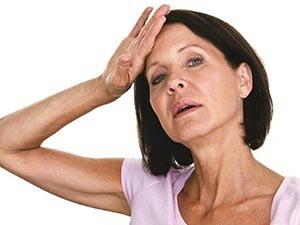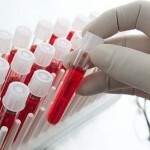Everyone is used to think that the main loss in menopause is the decrease in the volume of female hormones. But estrogens and progestins are not the only substances on which normal well-being depends. The male hormone testosterone is also present in the female body. And he takes an active part in many aspects of life. What is the significance of testosterone in women's menopause, is the number of testosterone changing, and how does it affect health and other health criteria?
The role of the hormone
 Testosterone is produced in the same way as female sex hormones, with ovaries in a complex chemical reaction, from cholesterol. The substance belongs to the androgen group, so its production and quantity depend on the work of other glands, the individual parameters of the woman.
Testosterone is produced in the same way as female sex hormones, with ovaries in a complex chemical reaction, from cholesterol. The substance belongs to the androgen group, so its production and quantity depend on the work of other glands, the individual parameters of the woman.
Testosterone provides many conditions for well-being and functions of different parts of the body:
- Sexual desire;
- Ratio and volume of fat and muscle tissue;
- Nervous system work;
- Functioning of endocrine glands.
He also participates in biological transformations occurring in tissues, production of other necessary substances, including hormones.
How the amount of the hormone changes with the climax
Testosterone in women with menopause decreases quantitatively. If previously its value was 3.09 pg / ml, it is now reduced to 2.6 pg / ml, and in the late period 1.8 pg / ml. This is due primarily to changes in the tissues of the ovaries. In them, the connective begins to predominate, and the number of follicles comes to an end.
At the onset of premenopause, the volume of testosterone may increase. So the body stimulates the production of reduced estrogens. A male hormone can spur it. But this lasts for a short time, as not only the production of estrogens and progestins is reduced, but also the number of enzymes involved in the processing of testosterone.

Effect on climacteric manifestations of
Testosterone in menopause is present in women in short supply. The larger the volume of substance is lacking, the more active are the conditions for the appearance of some symptoms of the condition:
-
 Absence of libido. The hormone first acted on certain parts of the brain that were responsible for sexual arousal. The decrease in testosterone leads to their "falling asleep", many women disappear any interest in the intimate side of life. The production of serotonin, which also comes out as a result of orgasm, also decreases;
Absence of libido. The hormone first acted on certain parts of the brain that were responsible for sexual arousal. The decrease in testosterone leads to their "falling asleep", many women disappear any interest in the intimate side of life. The production of serotonin, which also comes out as a result of orgasm, also decreases; - Weight gain. The hormone is responsible for the balance of fat and muscle tissue. The latter grows and is renewed thanks to him. In menopause this process is inhibited, muscles weaken and decrease in volume. But the fat tissue grows, due to a change in the ratio of testosterone and estradiol. It is localized mainly around the waist, that is, according to the male type. The figure is deprived of femininity, forms are outlined less clearly, the body becomes flabby;
- Deterioration of vascular conductivity. The greater amount of cholesterol present in the body ceases to be converted to useful substances, since for reaction with testosterone there is not enough estradiol. Androgen now plays an unenviable role, that is, contributes to the deposition of plaques on the vascular walls, increasing the viscosity of the blood. The capillaries themselves become less elastic and narrow. This causes an increase in pressure, headaches, hot flashes. The risk of cardiovascular ailments and cerebral circulation disorders increases;
- Hair loss. Normal metabolism is impossible without a sufficient amount of testosterone. And without it, in turn, cell renewal slows down, including in hair follicles;
- Dryness of the skin. In the development of collagen, ensuring its elasticity and freshness, testosterone also participates. It is also necessary for conversion together with estrogens into progesterone regulating the activity of the sebaceous glands. With the climax, all components become smaller, and wrinkles appear on the skin, the epidermis weakens;
- Fast set. Testosterone for women in menopause is important in managing energy metabolism. Deficiency of the substance provokes weakness, drowsiness. A woman thinks slower, her memory and ability to absorb new information deteriorate;
- Volatile psychoemotional state. It mostly depends on the reactions that occur in the brain. With a decrease in the amount of hormones, biological processes go differently. A woman is worried about an irrational irritability, discontent with others and with herself. Periodically there is despondency, apathy, the depressive state becomes more likely. Good mood and self-confidence leave;
- Insomnia. This sign is especially active, as a rule, at the beginning of menopause, when hormones are not only decreasing, but abruptly. If testosterone is thrown out much in the evening, count on a quick falling asleep and an uninterrupted rest is not worth it. The hormone excites nervous activity, provoking anxiety, nightmares in dreams;
- Weakened bone tissue. Its density depends on the mutual effect on cells of estradiol and testosterone. The first hormone protects against injuries, but in menopause it shrinks. And testosterone is involved in the production of cells, which are the building material for bones. Its deficiency in the late menopausal period leads to their fragility due to the fact that the destructive substances begin to predominate.
 We recommend reading the article about the blood test for hormones in menopause. You will learn about the purpose of the diagnosis, changes in the composition of hormones in women during menopause, the consequences of changes in the hormonal background.
We recommend reading the article about the blood test for hormones in menopause. You will learn about the purpose of the diagnosis, changes in the composition of hormones in women during menopause, the consequences of changes in the hormonal background.
Even to some specialists it seems that testosterone has not so serious a role in menopause in women, than decreasing estrogens. In fact, the combined effect on the body of female sex hormones and androgens is very important.
